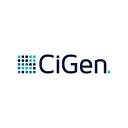Robotic Process Automation Glossary of Terms — The Definitive Guide
Robotic process automation is a brave representative of a ‘new world’ (in our own words), a world that has learned to use its resources most efficiently, according to a wise division of labour. A quite important lesson that the new world seems to have taken on board is that there is absolutely no need to waste human brains on tasks that can be performed much better, faster and error-free by software robots.
While the brains are free to engage in higher value activities that can bring about innovation, more satisfied customers, and higher self-valuation, automation can ensure more accurate results, cost reduction, improved competitiveness, scalability, compliance modernisation, and more. Sounds like a pretty good deal, doesn’t it?
So good in fact, that you might consider it seriously for your business. To facilitate your consideration, and your compliance with the high standards of efficiency in this new world, we will provide you with a robotic process automation glossary.
By going through it, it should become clearer what your next step should be in the exciting journey towards fully documented processes performed by software robots.
“Huh, by whom?!”
- Software robots are automation procedures that interact with other computer systems or applications through an interface (graphical user interface — GUI, or command line interface — CLI). The RPA tools are software robots, automatically performing routine, repetitive tasks (e.g., matching names and addresses from different spreadsheets) that have been traditionally carried out by humans. Software robots are those that permit human employees to let go of these (mostly) tedious tasks and engage full-on in higher value, more rewarding ones.
- Automation software is a software (a set of programs, routines and symbolic languages) that executes tasks by means of placing formal requests to other applications, just like a human would. Such software is meant to automate (i.e., to perform without human involvement) various tasks and processes. It is precisely this human-like functional feature of the software that justifies the label robotic process automation. An automation software emulates human activities, in the sense that it attains the same goals by non-biological means. A leading automation software provider and our partner is UiPath, whose software platform facilitates companies’ access to efficient process automation.
- Desktop automation is a specific kind of RPA that runs on an agent’s computer (desktop or laptop) to the end of performing an automated process just like the agent herself would. The agent is still the one who programs the timing of execution, calling for the process either “now” or at specific time intervals. When a procedure is automated, the agent can simply ‘call for it’ and then allow the system to run, while minding its own, higher value, business. It is an individualized form of automation, and because of this it does not need to deal with issues like security, control, or management.
- Automation design refers to a work plan for the RPA implementation strategy. Picking the right processes in order to ‘start big’ is just the first step of a long journey, with a high payoff potential. (You can find some suggestions for what questions should guide the selection of the candidate processes for the first round of automation here.) The automation design is a potentially long-term plan meant to facilitate your (full) deployment (see below) of streamlined, more efficient processes in your business.
- Robotic process automation roadmap provides the guidelines for attaining your targeted objectives via the implementation of RPA in your business. After having identified the most suitable processes for automation, devising the roadmap is the next ‘to do’ thing on your list. In the first place, you should make sure that the processes can be operationalized in terms of costs and times, in order to ease evaluation of whether the current implementation design actually works for you. The roadmap should also include sufficient documentation regarding the robustness of the processes you have chosen. A cost — benefit analysis of automating every process iteration would help you decide if you really need to do this. But do keep in mind that you don’t want to over-refine workflows — enough is enough, and more can easily be less! Another crucial aspect of a good roadmap is to remain reserved in your expectations, because although quite fast, the RPA benefits take time until you can get a sense of them. Also, be prepared to make changes on the way, as things progress.
- An RPA environment is a sum of those processes in your enterprise that have been automated. An environment is usually restricted to a certain business departement.
- Proof of concept (POC) is a kind of test trial for automation software, meant to highlight its limitations. The validity of the test resides in its being run in conditions as similar as possible to the real ones in which the robot will be expected to function. The POC test trial legitimizes the feasibility of the RPA system.
- Pilot program is the natural follow-up of POC, namely — a more advanced test of its feasibility, this time with reference to users’ eyes. This is like testing a new drug on humans, after it has been shown to do well on rats.
- Robots for hire is an RPA service that we are about to launch, in order to support small- and medium-sized enterprises’ access to the gains of RPA. As the name says, these are software robots that smaller companies can hire for a limited amount of time, be that short- or long-term, thus cutting down implementation costs while fully enjoying the typical RPA benefits they bring about.
